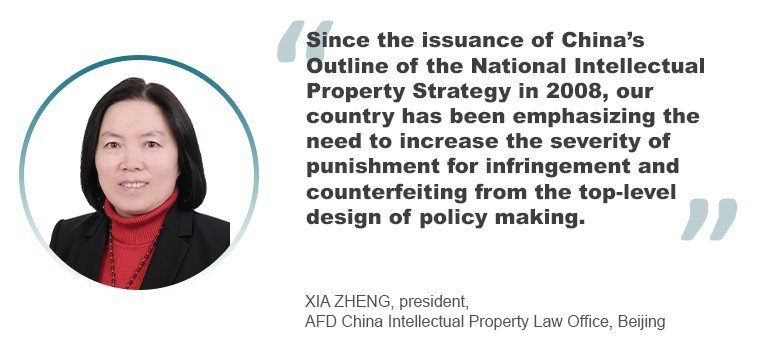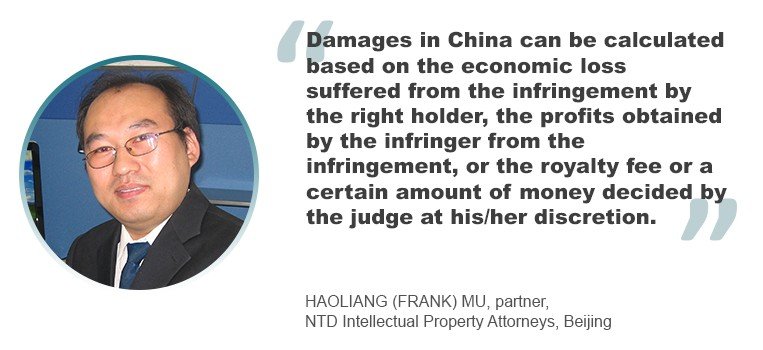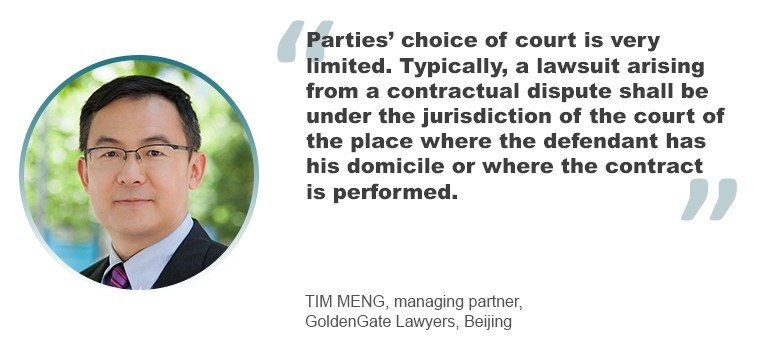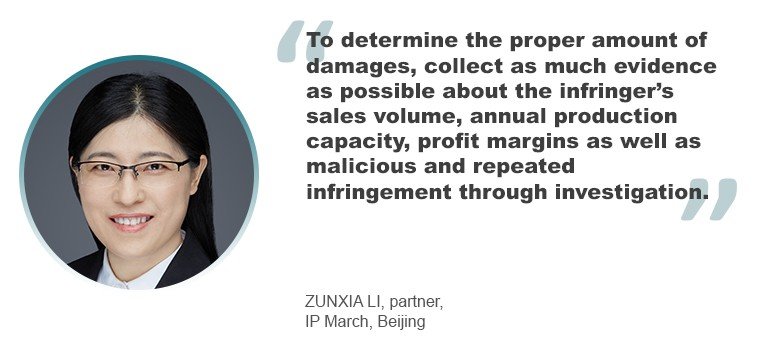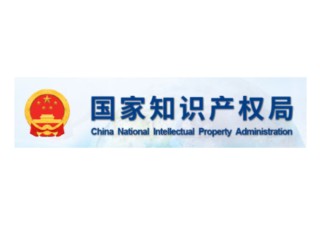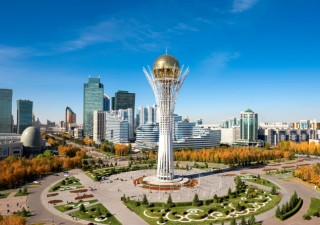![Damages awarded in IP cases continues to rise in China]()
Damage awards have skyrocketed in China in recent years, thanks to new legislation and changing court practices. Johnny Chan delves into the methods applied in damage calculation, advice on court selection and the evidence collection tips.
Have you wondered why damage awards by Chinese courts have been increasing massively in recent years, especially for foreign brands such as Lego and Nike? A local IP expert tells Asia IP that the increased damages are mainly due to three aspects:
“In respect of policy, since the issuance of China’s Outline of the National Intellectual Property Strategy in 2008, our country has been emphasizing the need to increase the severity of punishment for infringement and counterfeiting from the top-level design of policy making,” says Xia Zheng, president of AFD China Intellectual Property Law Office in Beijing.
Zheng says that the maximum amount of statutory compensation has been raised from Rmb3 to Rmb5 million (US$463,000 to US$771,000) for patent infringement, from Rmb500,000 to Rmb3 million (US$77,000 to US$463,000) and then to Rmb5 million for trademark infringement, and from Rmb500,000 to Rmb5 million for copyright infringement. “At the same time, it has been further clarified that the amount of compensation should include reasonable expenses paid by the right holder to stop the infringement, and a system of punitive compensation for intentional infringement has been introduced, which allows a punitive compensation of less than five times the amount of a normal compensation calculated according to law,” she says.
“In respect of awareness, the value of IP has been recognized by the market. Universities and research institutes have put more effort into technology transfer, and the quantity and quality of IP transfer and licensing have been improved. According to the Annual Report on The Commercialization of Scientific and Technological Achievements in 2020 from Institutions of Higher Learning and Research, universities and academic institutes across the country signed 15,035 contracts in 2019 to commercialize their research findings, with a total trading volume of Rmb15.24 billion (US$2.4 billion); 24 contracts were worth more than Rmb100 million (US$15.4 million).”
A similar situation also exists in the field of copyright. “Bulk purchasing of music and video resources by mainstream music and video websites through legitimate channels promotes a continuous increase in the licensing fees of high-quality resources,” Zheng says. “As a reference index for the calculation of infringement damages, the increase of licensing fees will obviously lead to an increase in the amount of compensation for infringement.”
In respect of operation, IP holders have increased their awareness of protection and their abilities to adduce evidence. “Meanwhile, the infringement litigation system has been continuously improved, and the courts have increased the intensity of access to evidence upon request, and improved the convenience of judicial remedies for infringement. In the course of litigation, technical investigation, evaluation and appraisal are introduced, so that the amount of compensation can be guided by market value and be in line with the type of the IP, the degree of innovation and its market value, thereby ensuring that the right holder can get adequate compensation,” she says. “Under the joint effect of the above factors, the number of infringement lawsuits, the amount of claimed damages and the average amount of awarded compensations have all increased significantly.”
Impact assessment
There are typical methods used to calculate damages, but what are the pros and cons of each? And should be additional ways to assess?
“Generally speaking, damages in China can be calculated based on the economic loss suffered from the infringement by the right holder, the profits obtained by the infringer from the infringement, or the royalty fee or a certain amount of money decided by the judge at his/her discretion,” says Haoliang (Frank) Mu, a senior lawyer and partner at NTD Intellectual Property Attorneys in Beijing. “In many occasions, there are some difficulties in calculating the damages based on the economic loss of the right holder or the profits of the infringer. The right holder may be reluctant to disclose his financial data or it may be difficult to prove the economic loss was caused solely by the infringement. For the infringer, he may refuse to disclose this financial data, or the related data may be very general in nature, so it is unlikely to determine the profits obtained from infringement, especially when the infringing product is just one of many products.”
In case the right holder has licensed someone else to apply for his IP, related royalty fees can be a basis for calculating the damages, which is a convenient and practical method but is not applicable to those disputes in which no license has been granted, Mu says. “The last method is widely applied in China; that is, the damages are decided by the judge at his discretion with the consideration of the term of infringement, the sales scale and sales channel, and the estimated contribution rate of the IP, etc.”
In addition, if a former dispute has been settled with an agreement which clearly prescribes the damages if the infringer is found of infringing the same IP again, such kind of method calculating the damages can be supported by Chinese courts, he says.
The message behind
Besides strengthening local IP protection, is China trying to attract more foreign direct investment through the recent cases with high damage awards? If so, have more multinational corporations been doing business in the country lately?
“The answer is yes,” says Cherry Guo, a senior partner at Beijing Tiantai Law Firm.
“In the past two years, China has revised its IP laws and introduced a punitive compensation mechanism. For those who intentionally infringe patents, trademarks and copyright, if the circumstances are serious, the amount of compensation can be more than one and less than five times of the amount of loss. If it is difficult to determine the loss of the right owner, the benefit obtained by the infringer and the license fee, the court may, according to the circumstances of the infringement, judge to pay compensation of less than Rmb5 million, which greatly increases the statutory compensation. It is one of the measures taken by the government to strengthen IP protection, which will be conducive to attracting more high-tech investment. However, while the law has provided a basis for high compensation, time is still needed for the courts to implement the law, so its influence on FDI attraction is indirect.”
Guo says she believes a combination of factors are at play in China’s apparent increase in FDI desirability, not simply the increased damages, including a positive trend in economic development trend. “In spite of Covid-19, China was able to quickly achieve economic recovery, maintain social stability and create a good investment environment for foreign investment,” she says.
At the same time, China’s domestic demand market is expanding, and the country is becoming the largest consumer market in the world. China has also worked for many years to improve the legal system for FDI and to strengthen its FDI policies. “For example, in 2021, the Ministry of Commerce said that it will further reduce the negative list of foreign investment access so that foreign investors will have more confidence in China’s business environment and are willing to invest in China,” Guo says. “Under the influence of these factors, foreign businesses have indeed increased their investment in China. Among my clients, there is the first wholly-owned company established by a foreign investor in China in 2019; others have expanded their investment in China from a single company to opening new companies in other cities; and others have expanded by increasing the number of employees and added legal departments instead of taking care of mainland legal affairs through the Hong Kong office. This year, I have also serviced some overseas clients in seeking legal advice for investing in new businesses in China.”
Choosing your battlefield
Tim Meng, managing partner at GoldenGate Lawyers in Beijing, says that Chinese courts’ jurisdictions are based on the nature of the disputes and the locations of the courts, oftening leaving few opportunities for forum shopping. “Parties’ choice of court is very limited. Typically, a lawsuit arising from a contractual dispute shall be under the jurisdiction of the court of the place where the defendant has his domicile or where the contract is performed. On the other hand, the parties may by agreement choose the court of the place where the contract is signed or where the plaintiff has his domicile or where the subject matter is located.”
With regard to copyright or trademark infringement, the court of the place where the infringement is committed, the place where the infringing copies are stored or sealed up, or the place where the defendant has his domicile will have jurisdiction, Meng says. “It shall be noted that the infringement dispute related to computer network copyright shall be under the jurisdiction of the court of the place where the infringement occurred or where the defendant has his domicile. The place of infringement includes the place where the network server, computer terminal and other equipment are located.”
Notably, China has established four IP courts. In December 2020, China’s National People’s Congress approved the formation of China’s fourth IP court, at the Hainan Free Trade Port, joining previously established IP courts in Beijing, Shanghai and Guangzhou.
“The courts have specialized jurisdiction over civil and administrative cases involving patents, trade secrets, software, hardware, agricultural technology, and an appeal against a first-instance judgment or ruling of an IP-related civil or administrative case made by a root court in the locality of the IP court. For an appeal against a first-instance judgment or ruling of a civil or administrative case made by an IP court, it will be heard by the IP tribunal of a high court in the locality of the IP court,” he says.
In addition, Meng notes, China has established internet courts in Beijing, Hangzhou and Guangzhou, which are dedicated to handling internet-related cases. They handle first-instance cases within the jurisdiction of their own cities, including disputes arising from ownership and infringement of online copyright and domain names. “Most appeals will be heard by the intermediate courts in their respective jurisdictions. It shall be pointed out that online copyright ownership and infringement disputes heard by the Beijing and Guangzhou internet court shall be appealed to the IP courts in Beijing and Guangzhou, respectively,” he says.
______________________________________________________________________________________________________
Asking for more
When it comes to determining the proper amount of compensation in a damages award in China, a key step is to collect sufficient evidence. The IP owner may try to use the following tips, provided by Zunxia Li, a partner at IP March in Beijing, to help increase the amount of compensation:
- Collect as much evidence as possible about the infringer’s sales volume (i.e., on- and offline bank statements, industry statistics), annual production capacity, profit margins (i.e., prospectus and annual report) as well as malicious and repeated infringement through investigation (i.e. on- and offsite);
- Based on the evidence collected, have an attorney send a letter to the infringer, timely track when the infringement stops and, in the case of continuing infringement, acquire the corresponding evidence;
- Where the export of infringing products is involved, register the IP with Customs first and then request a seizure action by Customs and collect detailed information on the export of infringing products;
- Where there is an inventory of infringing products, initiate an administrative action first for sealing and seizing, and then bring a civil lawsuit based on the seizure for compensation;
- Before or during litigation, apply to the court to preserve evidence, then seize infringing products and molds used for production, obtain the infringer’s related financial information and/or start an investigation to collect evidence in order to get export and tax payment records;
- Based on the evidence collected, involve the infringing manufacturer as defendant or co-defendant; and
- During litigation, apply to the court for a financial audit.
“The above tips can be flexibly selected and used according to specific situations,” says Li. – JOHNNY CHAN



